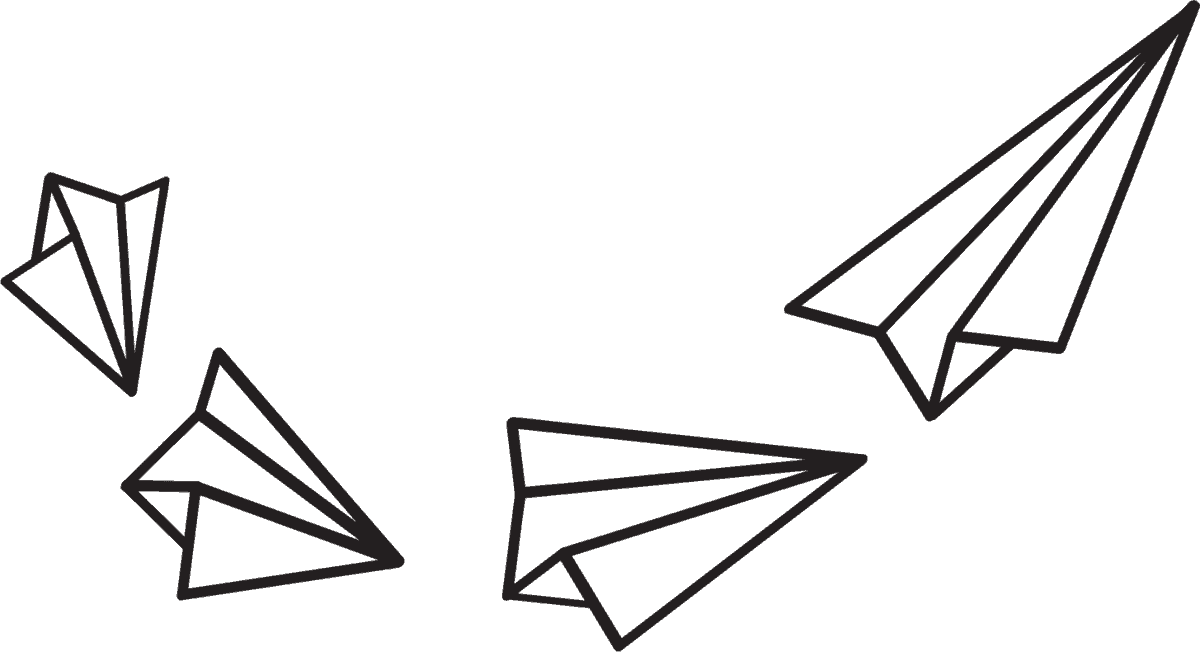🤖 AI Product Roadmap Generator
Creating a product roadmap is crucial for aligning your team and tracking progress, but it can get complicated as priorities change and new ideas come up. AI Product Roadmap Generator makes this easier by organising your goals, features, and timelines into a clear, actionable plan.
It analyses data and team input to help you prioritise tasks and set realistic milestones, keeping everyone on the same page. With AI, you can create a flexible, data-driven roadmap that keeps your product development on track and adaptable to change.
What Is an AI Product Roadmap Generator?
AI Product Roadmap Generator helps you create a strategic plan for your product’s development. It uses AI to analyse key factors like market trends, user feedback, and business goals. If you’re having trouble organising what features to work on next, this tool makes it easier by generating a clear and prioritised roadmap for you.
The AI looks at things like customer needs, competitor strategies, and your available resources to suggest the most valuable features for future releases. It can also help with setting timelines, milestone deadlines, and figuring out how to best allocate resources. This ensures that your roadmap stays aligned with your short-term and long-term goals, while staying flexible enough to adapt to user needs or market changes.
This tool is especially helpful for product managers, startup founders, and agile teams who need to juggle multiple features, deadlines, and resources at once.
How Does an AI Product Roadmap Generator Work?
The AI product roadmap generator helps you map out tasks, timelines, and resources to ensure you stay on track to meet your goals. By automating the planning process, it helps you focus on the most important tasks, allocate resources effectively, and prioritise features.
Here’s how it works, broken down into input, processing, and output steps.
Input
To start, you provide the AI with key details about your product, your target goals, and available resources. These inputs are essential for the AI to create a roadmap tailored to your product needs.
Key inputs include:
- Product Description: You give a brief overview of your product, such as “A mobile app that helps users track their daily fitness and nutrition.” This gives the AI context about what you’re building and the general purpose of your product.
- Target Audience: You specify your target audience, like “Health-conscious individuals aged 18-35.” This helps the AI focus on features and tasks that align with the needs of your audience.
- Timeframe: You set a timeframe for the roadmap, such as 12 months. This is critical as it tells the AI how long you have to complete key milestones and launch your product.
- Main Goal of the Roadmap: You outline the main objective of your product, such as “To launch the app with core features and gain 50,000 active users in the first year.” The AI uses this goal to prioritise tasks that contribute most directly to reaching this target.
- Tasks and Features: You list the tasks that need to be completed. For example, tasks could include developing the user interface, integrating workout tracking, adding a nutritional database, and conducting beta testing. This helps the AI understand which features need to be included in the roadmap.
- Resources and Budget: You provide information about available resources, like “A team of 5 developers, a $50,000 marketing budget, and access to a fitness data API.” The AI will use this to create a realistic plan based on your capabilities and constraints.
These inputs allow the AI to design a roadmap that’s practical, focused on your goals, and aligned with your resources.
Processing
After receiving the inputs, the AI begins processing the information. This step is where the tool analyses the data to prioritise tasks, allocate resources, and develop a structured timeline.
Here’s how the processing works:
- Task Prioritisation: The AI evaluates the tasks based on their importance to your main goal. For example, if launching with core features is the primary objective, the AI will prioritise tasks like user interface development and workout tracking over less critical features like advanced notifications.
- Resource Allocation: The AI analyses the available resources (such as your team and budget) and allocates them efficiently. For instance, it may suggest that the development team focuses on the most critical tasks first, while a portion of the marketing budget is reserved for the launch phase.
- Timeline and Phasing: Based on your 12-month timeframe, the AI breaks the project into phases. It assigns tasks to specific time periods, ensuring that essential features are developed first, followed by testing and refinement. For example, the first 3 months might focus on basic development, while the last 3 months could be dedicated to beta testing and marketing.
- Feasibility Check: The AI ensures that the tasks and goals are realistic given the time and resources available. If certain goals are too ambitious for your current resources, the AI may suggest scaling them down or adjusting timelines.
This step ensures that the roadmap is practical, achievable, and strategically designed to meet your end goals.
Output
After processing, the AI generates a detailed product roadmap that outlines the tasks, timeline, and resources needed to achieve your product goals. This roadmap acts as a step-by-step guide for product development, keeping your team aligned and focused.
Here’s what the output includes:
- Structured Timeline: The AI provides a timeline that breaks the 12-month project into distinct phases. Each phase includes a set of tasks, such as development, testing, and marketing. For example:
- Months 1-3: Develop user interface and integrate core tracking features.
- Months 4-6: Add nutritional database and implement push notifications.
- Months 7-9: Conduct beta testing and gather feedback.
- Task Prioritisation: The roadmap highlights which tasks are the most critical to your success, allowing your team to focus on the essential features first. For example, developing core features like workout tracking may be marked as high priority, while adding advanced filters for data analysis might be lower priority.
- Resource Management: The roadmap outlines how to allocate your resources, ensuring your team and budget are used effectively. For instance, it may suggest dedicating 70% of your developer resources to core feature development in the first phase, with a portion of the budget saved for a marketing push in the final months before launch.
- Milestones and Goals: The AI includes milestones to track your progress, such as completing beta testing by Month 9 or launching the marketing campaign by Month 10. These milestones help keep the project on track and ensure that you're moving toward your goal of gaining 50,000 active users.
- Risk Management: If there are any concerns about meeting deadlines or staying within budget, the AI may suggest contingency plans, like cutting back on less essential features to ensure the project stays on course.
How to Create a Product Roadmap Using AI Product Roadmap Generator?
A product roadmap ensures that your team has a clear direction and timeline for delivering features and improvements, helping you stay on track with your overall product strategy. The AI Product Roadmap Generator simplifies this process by guiding you through essential fields. Here’s how to create a product roadmap using this tool:
1. Provide a Brief Description of Your Product
The first step is to offer a concise description of your product. This should include what your product does and its primary function or value. This helps the roadmap stay focused on the core purpose of the product.
For example, if you're developing an app that helps users track their fitness and nutrition, make sure this is clearly defined. Think about what problem your product solves and who it's meant for.
A clear product description ensures that the entire roadmap is aligned with the core purpose of the product. This helps the team stay focused and makes it easier to prioritise tasks that directly contribute to the product’s goals.
2. Define Your Target Audience
Next, identify who your product is designed for. Knowing your target audience is crucial because it impacts which features are prioritised in your roadmap. Consider factors such as:
- Age group
- Interests or behaviours
- Specific needs or pain points your product addresses
For example, if your product is a fitness app, your target audience could be health-conscious individuals who want to easily track their nutrition and exercise habits.
Defining your target audience ensures that the roadmap includes features that are most relevant and valuable to the users who will be interacting with your product. It helps focus on solving specific user problems rather than building unnecessary features.
3. Set the Timeframe for the Roadmap
In this section, specify the timeframe in which you plan to complete the roadmap. This could range from a few months to a year or longer, depending on the complexity of the project.
For example, you may want to plan for a 12-month roadmap to cover the full development and marketing cycle of the product. Breaking the timeframe down into shorter milestones (like quarterly goals) can also be useful.
Having a clear timeframe helps ensure that milestones and deliverables are met on time. It also helps the team manage resources effectively and sets expectations for stakeholders.
4. Define the Main Goal of the Product Roadmap
The next step is to clarify the main goal of the roadmap. What do you want to achieve by the end of this roadmap? This could be launching the core product with key features or reaching a specific number of users.
For example, your goal might be to launch the product and gain 50,000 active users in the first year.
A clear goal keeps the entire team aligned on what success looks like for the roadmap. It also helps prioritise tasks that directly contribute to achieving this overarching goal.
5. List All the Tasks or Actions to Include in the Roadmap
Now, it’s time to list the tasks or actions that need to be completed in order to reach your goal. Break down the development process into key tasks or milestones. This could include:
- Developing the user interface (UI)
- Implementing essential features (e.g., workout tracking, nutritional databases)
- Testing the app and fixing bugs
- Marketing initiatives, such as launching beta programs or creating content
Each task should be actionable and contribute to the larger goal of your product roadmap. Make sure to prioritise the features that deliver the most value to your target audience first.
A detailed breakdown of tasks ensures that each step of the product’s development is clear and manageable. This helps the team stay focused on the most critical aspects and prevents any tasks from being overlooked.
6. Specify Resources or Budget Available for the Project
In this section, outline the resources or budget you have at your disposal. This includes team members, financial resources, and any tools or software that will be needed to develop and launch the product.
For example, you might have a development team of five members, a marketing budget, and access to specific APIs or third-party tools that will be used in the product.
Defining available resources helps the team manage expectations and allocate tasks effectively. It ensures that the roadmap is realistic and achievable based on what’s available.
7. Click Generate
Once you’ve filled out all the necessary information, click "Generate." The AI will process your inputs and create a detailed product roadmap based on the goals, tasks, and resources you’ve outlined.
The generated roadmap will provide a structured plan for your product’s development, including timelines, milestones, and key actions. Review the roadmap and make any adjustments as necessary to align with your team's objectives.
Get 3 New Researched Prompts Every Wednesday
Along with other AI for non-techies news.


